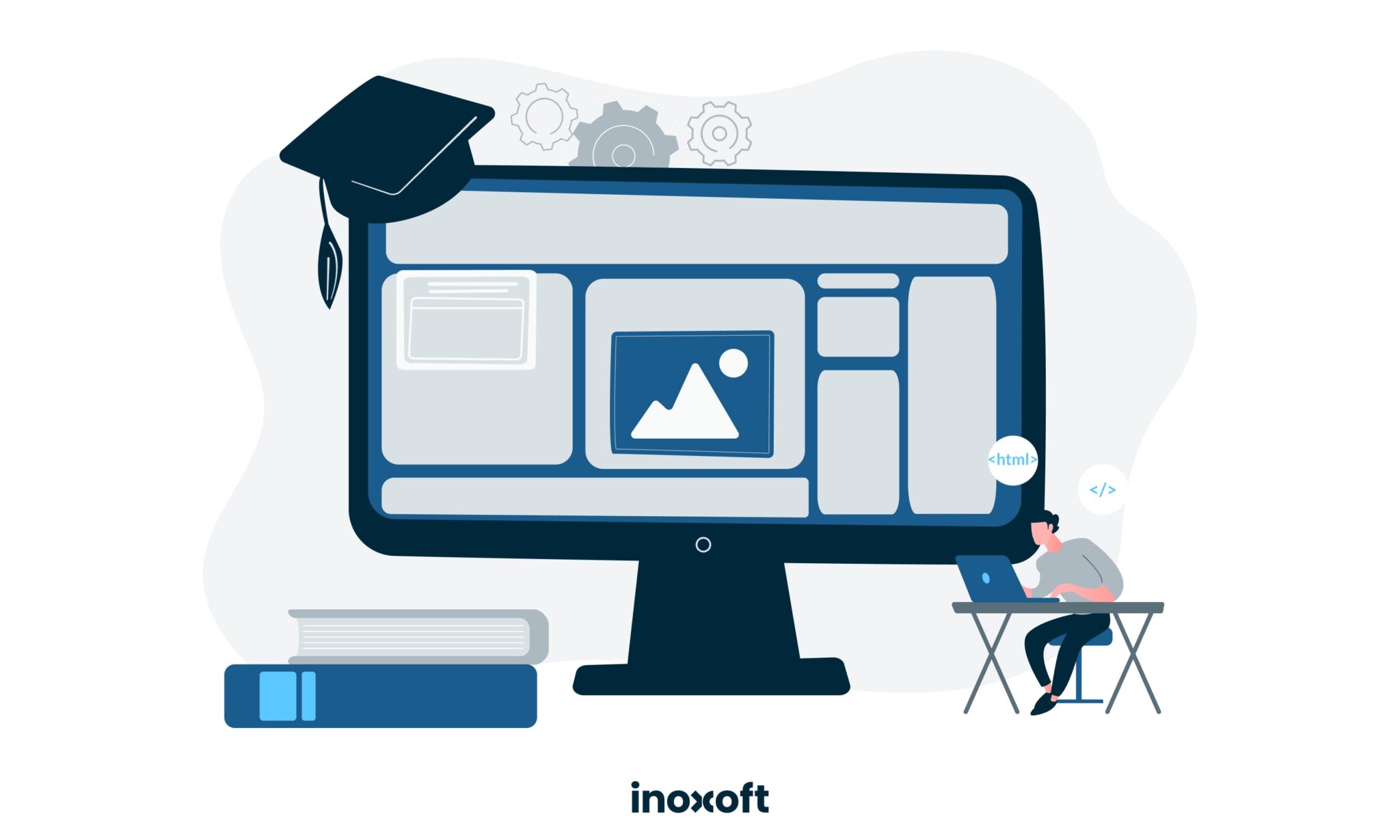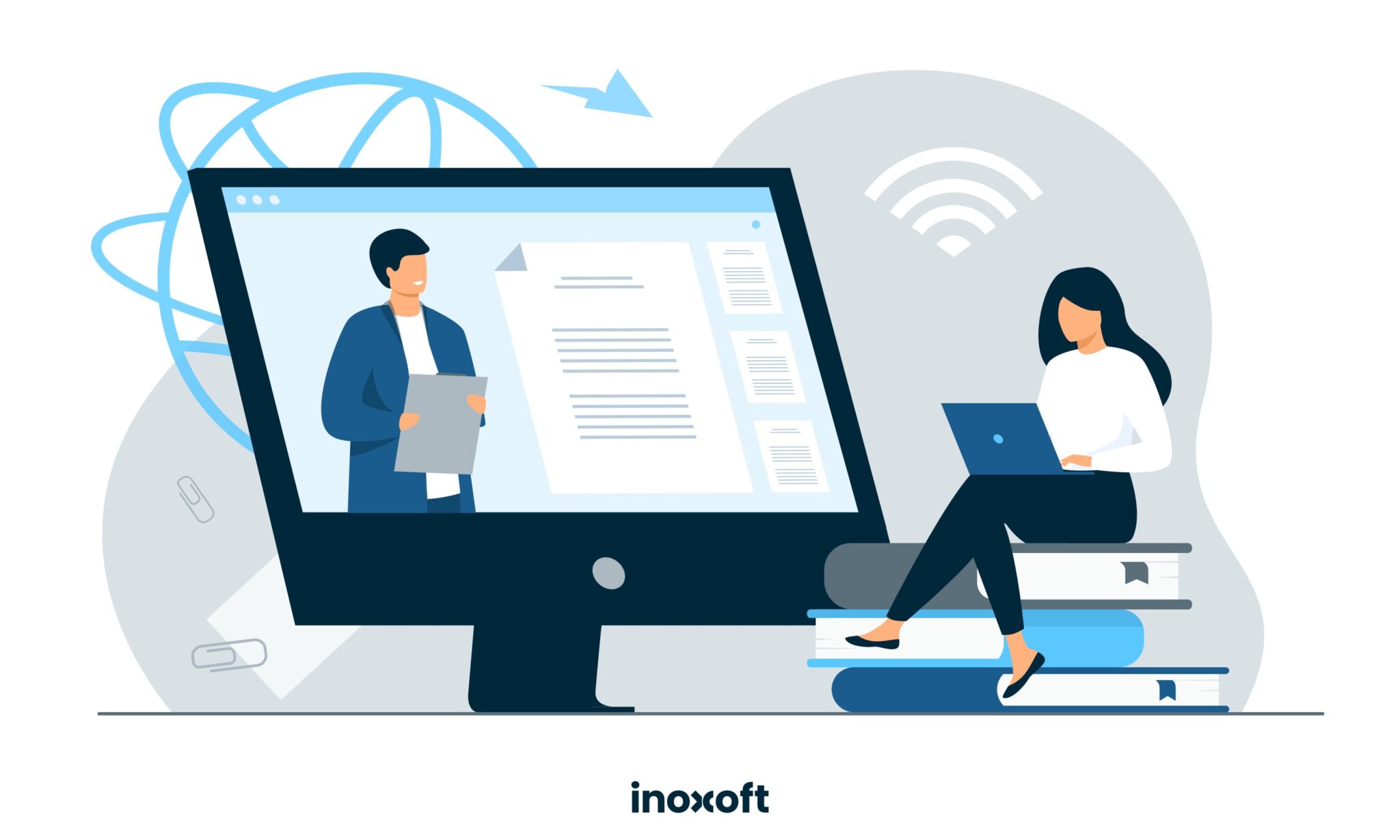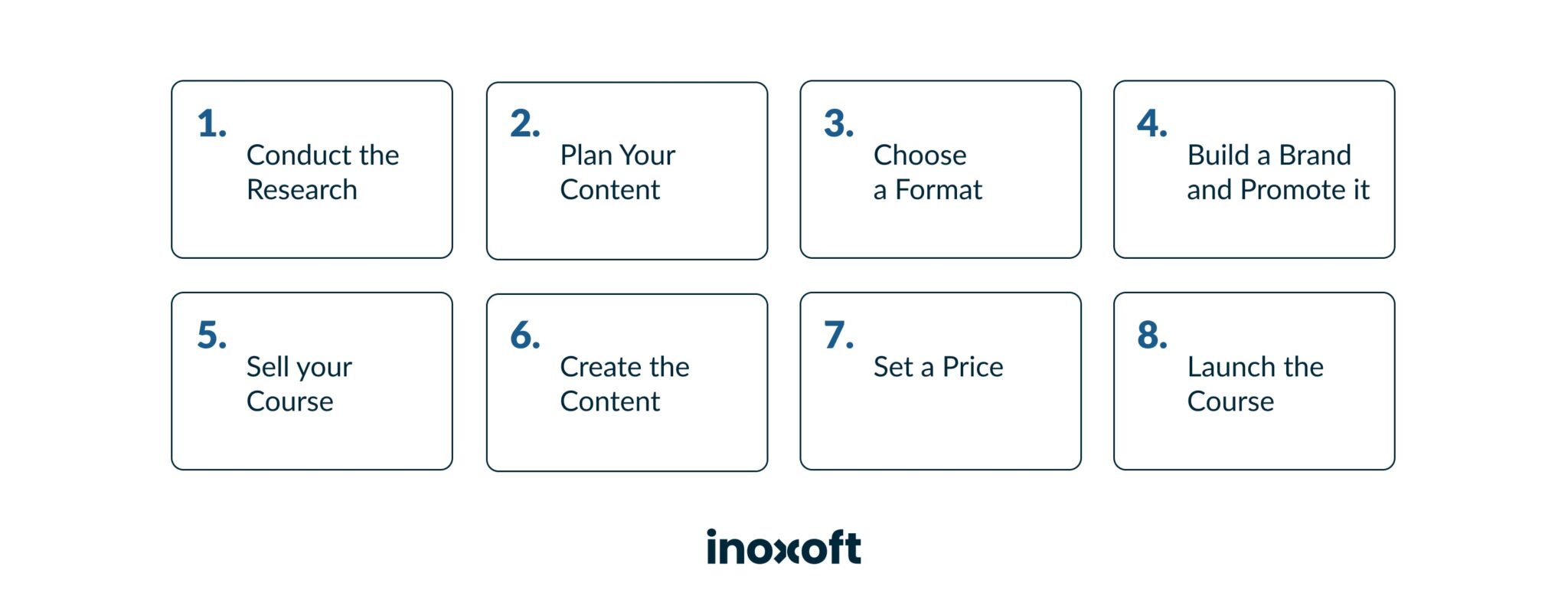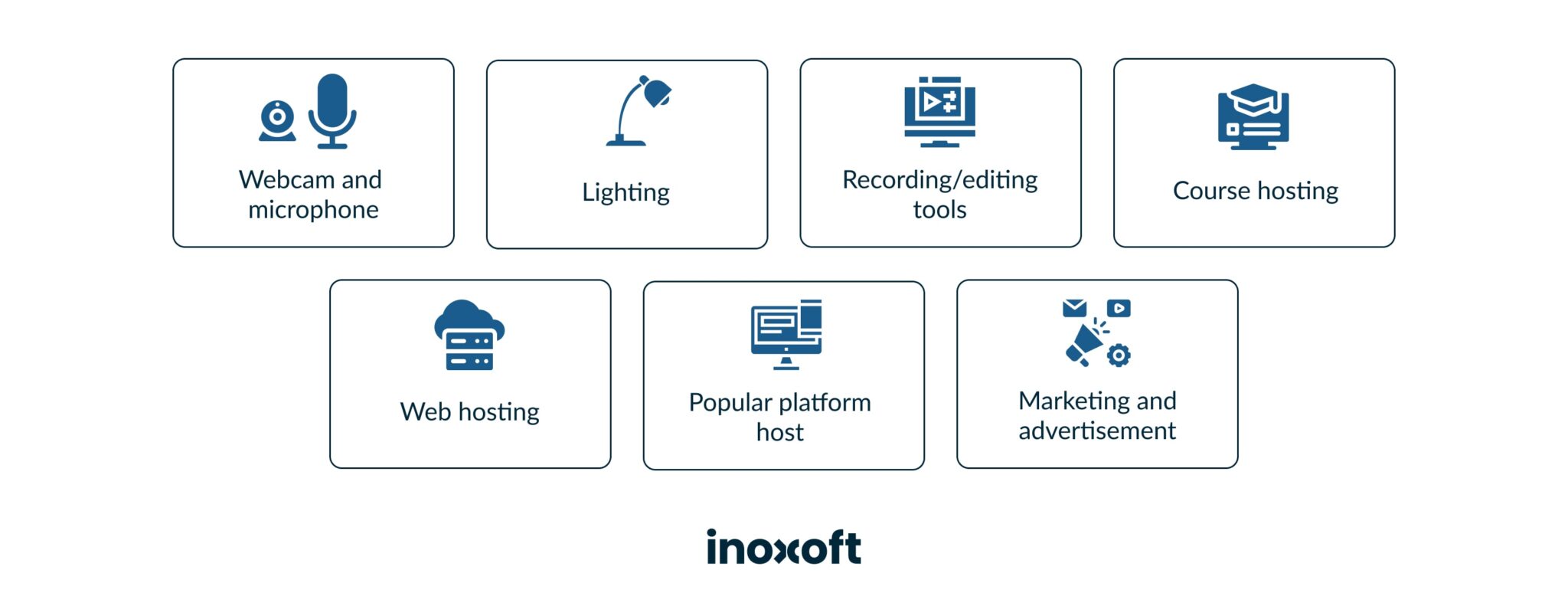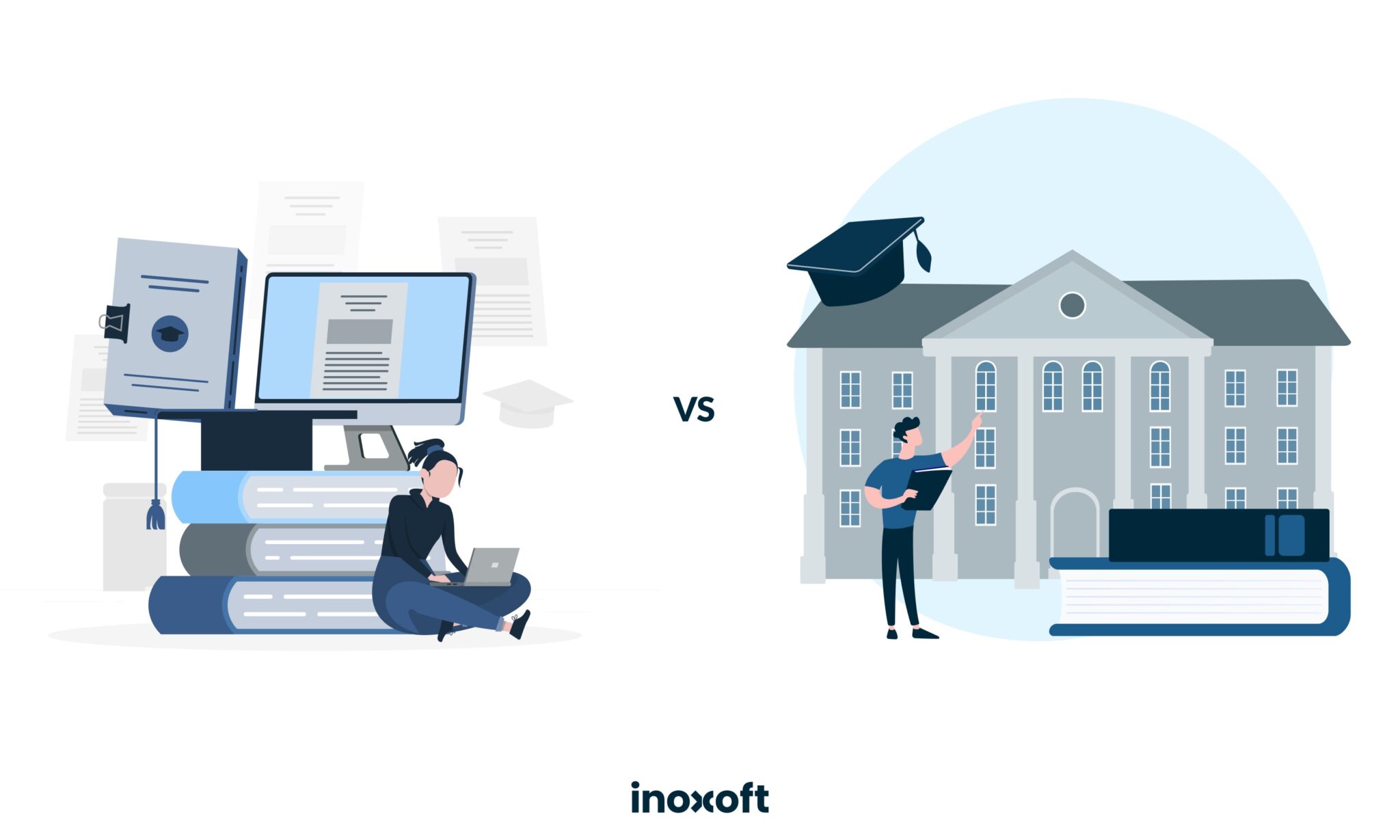E-learning has never been so in-demand as it is now in 2024. Suddenly, online courses became better and more informative than in-door studies. More and more users engage in online courses to acquire, accumulate and enhance professional skills. According to Statista, in 2022, about a quarter (25.6%) of people in the European Union took online courses or used learning materials on the internet.
E-learning is booming thanks to surging smartphone sales, a student-focused shift to online learning, the rise of gamification, and a heightened awareness of e-learning advantages. As a result, the global e-learning market was valued at $316.2 billion in 2023 and is projected to reach $661.6 billion by 2032, with a CAGR of 8.3%.
Given the industry's high competition, creating a truly valuable product is essential. In online programs, learners are looking for class recordings, easy access to online study materials, and flexibility to work and study. At the same time, the fear of distraction, lack of discipline, and low motivation are the biggest obstacles to online learning. Overcoming these challenges becomes possible with the help of gamification, VR/AR, and personalized tools powered by artificial intelligence and machine learning.
The benefits of online courses, including flexible, affordable, and scalable learning opportunities, are bigger than those of traditional education. But, how much does it cost to develop an online course?
- What Stands Behind an Online Course?
- Understanding Your Objective
- Who will be taking the course?
- How will this benefit them?
- What problem within your organization is this going to solve?
- How will you measure success?
- Levels of eLearning Courses
- Level 1 – Passive eLearning
- Level 2 – Limited Participation eLearning
- Level 3 – Moderate Interaction eLearning
- Level 4 – Full Immersion eLearning
- How to Develop an Online Course?
- Step 1: Conduct the research
- Step 2: Plan your content
- Step3: Choose a format
- Step 4: Build a brand and promote it
- Step 5: Sell your course
- Step 6: Create the content
- Step 7: Set a price
- Step 8: Launch the course
- How Much Does It Cost to Create an Online Course?
- A webcam and a microphone
- Good lighting
- Text, video, and image recording/editing tools
- Course hosting
- Web hosting
- Popular platform to host your course
- Marketing and advertising
- Traditional Courses and MOOCs Cost Comparison
- How to Create an Online Training Course?
- Assessment of needs
- Learning objectives and style
- Delivery mode, style, and timeline
- Budget
- Audience consideration
- Content development
- Training communication
- Measuring effectiveness
- Wrapping Up
What Stands Behind an Online Course?
According to a glossary, online courses are conducted over the Internet learning management system. The system allows students to view course details such as syllabus and course instructions as well as their academic progress. The benefit of LMS (LMS vs LCMS) is in the online communication between the peers and course teachers and flexibility in watching online material or carrying out tasks at your own pace.
Online courses are divided into MOOCs (Massive Open Online Courses). These courses are produced by large organizations such as edX, Prometheus, Coursera, Udemy. And traditional courses by universities like Purdue, Stanford, Harvard, etc., are more private and only for specific audiences.
Understanding Your Objective
Behind the development of any online course, there should be a clear understanding of the objectives, target audience, benefits, problem-solving aspects, and methods for measuring success. Let’s break down these key considerations:
Who will be taking the course?
- Define your target audience, including their demographic information, educational background, and skill levels.
- Tailor the course content and delivery methods to meet the needs and expectations of your target audience.
How will this benefit them?
- Clearly articulate the value proposition of the course for participants.
- Highlight how the course will contribute to their personal or professional development.
- Consider the practical application of the knowledge and skills gained from the course.
What problem within your organization is this going to solve?
- Identify specific challenges or gaps in knowledge within your organization that the course aims to address.
- Ensure that the course content is aligned with organizational goals and addresses relevant issues.
How will you measure success?
- Define KPIs to measure the success of the online course.
- Examples of KPIs include completion rates, participant satisfaction surveys, improvement in specific skills, or positive impacts on organizational performance.
- Regularly assess and analyze data to make informed decisions for course improvement.
Levels of eLearning Courses
ELearning levels vary by learner interactivity, impacting engagement and training outcomes. Higher interactivity means more engagement and better outcomes but comes with increased costs and longer course creation time. Based on this, there are four levels of eLearning courses.
Level 1 – Passive eLearning
Passive eLearning courses are characterized by minimal interactivity. They typically follow a PowerPoint-style format, incorporating basic graphics, audio, and video elements. They may conclude with a few multiple-choice or true/false questions. You can use it to share details about new products and company rules.
The basic advantage of passive learning courses is their cost-effectiveness and efficiency in time and resources. Learners benefit from increased control over pacing, allowing them to progress through the material at their preferred speed. However, this approach often results in a lower level of understanding, especially for acquiring new technical skills.
Level 2 – Limited Participation eLearning
Limited participation eLearning introduces more engagement elements. These courses include simple quizzes, drag-and-drop activities, or clickable images. They combine theory and practice for a better understanding of applying new knowledge to daily work tasks. Use it for training employees on workplace conduct or responding to emergencies.
While still relatively cost-effective, such courses require more time and effort to create. The added interactivity enhances the educational experience, allowing learners to apply knowledge rather than just passively absorbing information. Limited participation eLearning strikes a balance between engagement and resource investment, making it suitable for a broader range of topics and skills.
Level 3 – Moderate Interaction eLearning
Moderate interaction eLearning takes interactivity a step further. Courses in this category incorporate simulations, branching scenarios, and interactive case studies. Learners actively participate in decision-making and problem-solving exercises, fostering a deeper understanding of the subject.
Level 4 – Full Immersion eLearning
This level offers a fully immersive learning experience. Such courses feature virtual reality, augmented reality, and highly sophisticated simulations. Learners engage in realistic scenarios, enabling them to apply skills in a lifelike environment.
While this level provides the most effective learning outcomes, it requires a significant investment of time, resources, and technology. Full immersion eLearning is reserved for specialized training needs and situations where the highest level of skill acquisition and application is paramount.
How to Develop an Online Course?
There are various training models developers use to develop a course, one of which is the ADDIE model. The model includes 5 stages:
- Analysis
- Design
- Development
- Implementation
- Evaluation
Need software development time estimation? Learn how to do it the best way!
These are the basic stages to adhere to and they may vary according to the stakeholders that create a course together, and their preferences. If there is just one author of the course, the steps taken will be based mainly on the audience needs analysis. For example,
Step 1: Conduct the research
If you have a niche, conduct solid research on the topic. Do not target broad knowledge sharing. It is best to narrow your topic to a certain point and produce valuable information that the course listeners will consider relevant, up to the point, and goal-focused.
Step 2: Plan your content
Content Planning is essential. You are a guide and your course is a map. With the help of your course, learners should be able to get from point A to point B by a straight line. Every piece of information or video lesson should lead your audience closer to the goal of the course.
Step3: Choose a format
What will the format of the course be? Be sure to do research, gather questionnaire data according to the most preferred format to consume information. The way you’re going to interact and communicate with your audience from behind the screen can motivate them to engage further or start looking for a new course. Always try to make information interactive as it adds valuable points to user satisfaction.
Step 4: Build a brand and promote it
Your social reputation matters as well as the reputation of your course. Try to build a strong brand and promote it among the others.
Step 5: Sell your course
Create a page that sells. To sell your course to the students, it is best to make them truly interested. So, create a page with the basic info about you, your source, bull point the main questions your course answers and don’t forget to wrap your seamless content with a catchy design. This way you’ll be able to build an online audience.
Step 6: Create the content
Create content for the course. When you know your audience, the format of your course, and have a strong brand, it’s time to think about the correct course content. What style it would be: formal or informal? Would it be filled with complex terms or easy explanations? Think outside the box and create something smart enough for users to ask for its sequels.
Step 7: Set a price
Your course should have a price. Pick wisely and choose the one that will justify the cost of course development, your time, and your efforts.
Step 8: Launch the course
Test your course and speak about it. Beta-launch is obligatory to understand whether the course you offer is flawless and meets user demands. If it’s ok, start talking about the course on social media to gather attention.
How Much Does It Cost to Create an Online Course?
To start counting the cost of e-learning development, it is essential to make up a list of the most needed things that will assist you in course creation. So, the list will include:
A webcam and a microphone
A few years ago, these recording tools were considered expensive, but today both will cost you around $100. Of course, it depends on the devices you’ll be eager to choose. The more your cam or mic will have additional features, the costlier they will be.
Good lighting
To make sure your video is filled with the much-needed light, you can invest in a lighting kit, which is also around $100. For instance, just a lamp for cameos might cost you $30, and a bigger softbox lighting kit will cost about 70$.
Text, video, and image recording/editing tools
To save costs, your number one text editing platforms are Google Docs and Google Drive. The first is used to ensure you produce quality content and transform it into the most favorable format, e.g. PDF. Google Drive is the best and secure place to keep all your lectures together.
To record your video, you can find the free-of-charge software on the Internet. For instance, TechRadar made a list of completely free video recording programs: OSB Studio, FlashBack Express, Apowersoft Free Online Screen Recorder, Debut Video Capture, and ShareX. Here are the first five, but if you need more options, you can always visit TechRadar for that purpose.
To edit the video you’ve created, choose a tool like Lightworks. If you are a beginner, this is exactly what you need to cut and shape your video accordingly. To edit images within the video or any other you’ll use, try Canva – one of the easiest and most creative image editors today.
Course hosting
It depends on the platform you’re considering uploading your course to. For instance, YouTube is free, but there are some privacy concerns to think about if your course should be for a specific audience. If you consider Vimeo, it will be quite cheap if you use it the whole year round from $12 to $65 per month, and a free option with 3 videos is also available
Web hosting
What if you want to create your website and stream your course there? The cost ranges from $2 to $15 per month for shared hosting, while dedicated hosting typically ranges from $80 to $500 per month. This price is not final as it includes only basic website features. If you need more features to be there, expect higher pricing packages.
Popular platform to host your course
This option might be a 2-in-1 solution for course video hosting and web hosting domains. But, it will be costlier as well. Every platform has its paid plans, which vary from $250 to $350 per year, and more. Of course, you can choose the one that suits your course idea and budget the most. Let’s take Udemy as an example. As Udemy allows becoming a teacher on the platform and gives guidance on how to develop your course. But also, any software development company might help you with creating your custom e-learning course development platform.
Marketing and advertising
To make everything simple for you here, use Google Adwords, Facebook, Twitter, and other social media platforms to make your course known to the public. What’s more, these are completely free. If you engage in a more profound advertising campaign by the following social platforms, it’ll take up some budget.
Traditional Courses and MOOCs Cost Comparison
Here’s an example of the major differences between MOOCs and traditional courses.
|
Traditional Courses |
MOOCs |
|
Live lectures based on agenda |
Recorded video-lectures |
|
Content unlocks after passing the previous task |
Every video is open 24/7 |
|
Group learning |
Individual learning |
|
Teacher’s feedback |
Peer learners feedback |
|
Strict deadline |
Flexible deadline |
|
Weekly content |
24/7 content |
|
University-limited media |
Open-source media |
|
Learners search for materials (databases, libraries) |
Learners’ share materials |
|
Up to 60 min modules |
Up to 10-minute modules |
|
Content updates once per semester |
Content updates when it is outdated |
Based on the given budget, how much does eLearning cost? Let’s take Coursera – the #1 e-learning platform worldwide. How much do Coursera courses cost? Learners can choose from the free option, Guided Projects from $9.99, Professional Certificates from $49, and a year subscription from $399. What about Udemy? Here, any course costs between $19.99 and $199.99, or learners can pay $29.99 per month (plus applicable transaction taxes). It depends on the initial e-learning development cost.
To compare online courses, let’s investigate how much an online degree costs. The current cost of an undergraduate blended learning program at Arden University (UK) is slightly above £14,000 ($17,800). The GSBS Global Business School has a tuition fee for bachelor’s programs of around €9,900 ($10,900). As for top institutions, at Columbia University a two-year online program will cost around $53,500.
Of course, the numbers presented highly depend on the course longevity and complexity, and the monthly fee you have to pay for the course hosting platform.
How to Create an Online Training Course?
The method of course creation differs in every software development company. Inoxoft has experience in providing short-time workshops and presentations and even external courses in 2018 for the personal growth and skill enhancement of our employees and external participants through our AcademyX Education HUB. Recently, the company decided to go further and organize more of our external online live training courses in Data-Focused Programming and Quality Assurance Testing.
If you’d like to know how to create an online training course, online course development costs, and how we managed to do it, read on.
Assessment of needs
Every great journey starts with taking the first few steps. Hence, in the case of course development, our first steps were to analyze the market and plan the training’s niche. Analytical research requires time and has to be performed profoundly to understand what courses have already been offered by the other companies if these courses are popular and in-demand among society, what kind of aim the courses pursue, and what is the final output projected.
The better you conduct your research the better is your course market understanding and the ability to implement your own educational training. Thus, we have investigated our local competitors to gain knowledge about what students want from online courses and what they plan to achieve.
Also, there was a potential need to understand whether the courses could bring benefit for Inoxoft internally and what exactly we wanted to achieve by starting our custom training sessions. If the course has more disadvantages than advantages, it wouldn’t be reasonable to launch it.
For Inoxoft, the benefit of launching a course and the ability to teach students is in having the opportunity to communicate with people, see their reactions and responses (soft skills), their perception of the material (hard skills), and based on these features understand whether these people can be a part of our corporate culture, and share our vision, mission and values. This is done for a long-term perspective, and after the courses will be over, we might hire some of the trainees that match our expectations the most.
Learning objectives and style
Further steps in online training creation are to visualize the course’s aim and the way it will be conducted. Here, Inoxoft’s goals of the course are in
- forming a group of students according to an interest/values
- sharing valuable knowledge
- advancing the company’s teaching practices
- growing potential field experts
- enabling an opportunity to hire smart people afterward
- making a solid input into the local software development sector
The style of the course is chosen according to the company’s preferences, experience, and students’ convenience. In the midst of pandemics and strict quarantines, the best choice is the online sessions with both theoretical and practical parts equally conducted.
Delivery mode, style, and timeline
The mode and style of course delivery are going to be conducted online via the most convenient platform (Zoom, Google sheets, etc.). Also, the delivery will be dependent on a particular time, fixed days, and a specific timeline of 2 – 2,5 months.
Budget
What concerns custom eLearning course development cost, the budget of the course depends highly on the market research, public needs, and the business needs of the company. For now on, as the courses are our first trainings during pandemics, Inoxoft decided that they will be free of charge for the enrollers.
Audience consideration
Inoxoft believes that the biggest interest to enroll in our courses will be for students engaged in technical studies or the ones having completed a technical education. At least, our planning and marketing stage of the course development focused on this kind of audience. However, we understand that a lot of people, who want to change their career paths or are willing to try something new should have a chance as well.
So, we are open to review an application from anyone determined to become Data Scientists or QA professionals. The applicants will have to pass an interview in English, show their hard skills in the field and values. The interview’s success will be defined by the level of English-speaking knowledge that has to be not lower than B2. The course of Data-Focused Programming will be conducted by the native speaker and the comprehension part is among the core pillars of successful participation in the course.
Content development
The part of content development belongs to the course instructors, who understand clearly their target audience, and the audience’s level of knowledge in the field to produce a meaningful outline. The content is developed in English.
Both lecturers of the courses have outstanding knowledge in their areas of knowledge, more than 10 years of technical experience, and the experience of providing knowledge-sharing presentations and workshops. Thus, the content they will offer for their students has a solid background of hard skills and profound expertise in “teacher-student” interaction.
So, the lectures will be divided into theoretical and practical sessions, where students will be able not only to receive valuable information but also to put it into practice. And, if there are practical lessons, there is always a chance to correct errors on the spot.
Training communication
Training communication will be done through the chosen platform as well as an e-mail. Here, students should not feel the lack of communication and that the lecturer is not fully committed to the eLearning process as each of the training instructors are open to additional questions after every course session.
Measuring effectiveness
The stage of effectiveness measuring is still under production as the process of course creation involves pre-analysis, assessment in the midst, and aftermath analysis. As the course is something new for Inoxoft, this stage will be completed after finalizing the first course’s stream. However, if the course is considered engaging, the role of the lecturer is not only to provide the material but to carry students through the processes as approximate as possible and the high ROI will point out to the excellent course conducting quality and overall success.
Wrapping Up
Online courses are a good way to make an impact and their curriculum development costs, as well as costs for additional features and devices, are relatively low. Compare these costs with the ones of the traditional courses for a BA degree and you’ll agree with us completely. So, if you are the author of a digital course, but still wonder how to develop online training courses with the help of your own LMS, contact us. We have expertise in building LMS solutions and accumulate experience in online training course development.
Frequently Asked Questions
How long does it take to develop 1 hour of eLearning?
The development time for one hour of eLearning can vary widely based on course complexity, interactivity, and multimedia elements. On average, creating one hour of eLearning content may take 40 to 180 hours of work. However, more interactive and high-quality courses could require even more time, while simpler, text-based programs might take less.
What factors influence the cost estimate for creating custom eLearning courses?
The cost of online course development is influenced by the level of interactivity, multimedia elements, and the complexity of the content. Courses with high interactivity, simulations, or virtual reality components generally require more development time and resources, increasing the budget. The need for custom graphics, animations, or professional voiceovers also contributes to higher expenses. Also, consider costs for equipment, chosen platform, and marketing.
How does the choice of eLearning authoring tools or platforms impact the cost estimate?
The choice of eLearning authoring tools or platforms significantly impacts the cost estimate, as licensing fees, accessibility of features, and ease of use vary among different tools. Some of them require a one-time purchase or subscription fee, while others have ongoing costs. Tools with more advanced features may demand a steeper learning curve, potentially affecting development time and costs.





